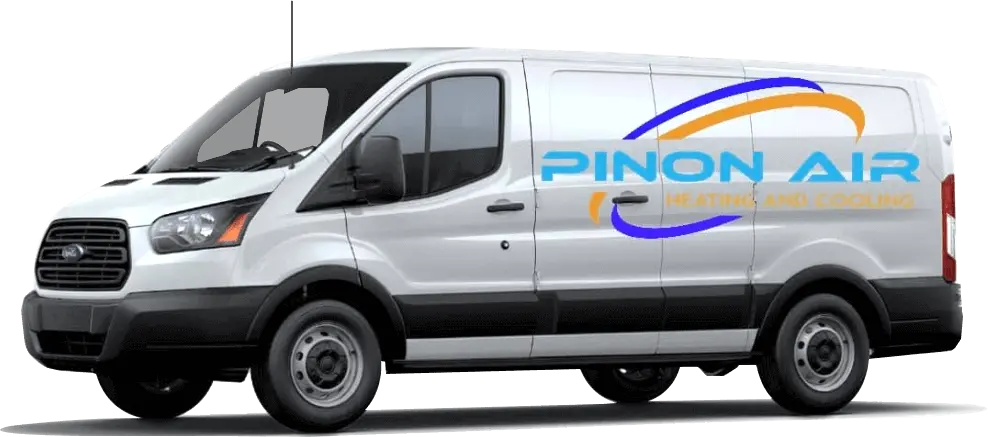Homeowners in Laveen often reach a point where their current air conditioning system just isn’t cutting it anymore. Whether it’s higher electric bills, uneven temperatures, or constant breakdowns, the signs can be frustrating. Replacing your system is an investment, and deciding when and what to upgrade to matters. With summer heat pushing older units to their limits, many are considering high-efficiency options as a smarter long-term solution.
But upgrading your AC isn’t as simple as picking a newer model. There’s a lot to think through, and rushing into a decision can lead to more problems down the road. From system types to installation compatibility and cost, overlooking even one factor can lead to regrets. That’s why it helps to break things down clearly, starting with what high-efficiency systems are and what makes them different in a practical way.
Understanding High-Efficiency AC Systems
High-efficiency AC units are built to deliver better performance using less energy. These systems circulate cool air more effectively, giving you steady comfort while putting less strain on your electrical system. The trade-off is usually a higher upfront cost, but that often comes with better overall system reliability and lower monthly operating expenses with consistent use.
Some key features of high-efficiency AC systems include:
– Variable-speed compressors that adjust the level of cooling based on needs instead of working at full power all the time
– Advanced thermostats that control temperature more precisely than older models
– Performance monitoring that alerts you to errors or service needs quickly
– Energy efficiency ratings (commonly referred to as SEER) that reflect how well the system uses power
Unlike standard units which operate on a stop-and-start cycle, many high-efficiency models run longer at lower speeds. This alone can help cool your home more evenly and reduce those temperature swings that leave parts of the home too warm or too cold. The added features also tend to lower wear and tear on the internal parts, which helps the systems last longer with fewer major breakdowns.
Choosing this type of upgrade can make sense for homes in Laveen, especially if your current setup is more than 10 years old or running into repeated repair needs. One example is a homeowner who had to fix their older AC three times during one summer. Eventually, repairing no longer made financial sense. Transitioning to a high-efficiency AC meant fewer service calls and more predictable comfort.
Assessing Your Home’s Cooling Needs
Not every high-efficiency unit is right for every home. Before moving forward with a new installation, it’s important to look at your home as a whole. The design, square footage, insulation, and number of windows can all affect which kind of AC will work best.
Here are three areas to focus on when planning for AC installation in Laveen:
1. Home Size and Layout: A two-story house with multiple rooms needs different airflow solutions than a single-story home with an open floor plan. If your unit isn’t the right size for your home, it could result in short cycling or nonstop operation that raises energy bills.
2. Insulation and Ductwork: Even the most efficient AC system won’t perform well if the home isn’t properly insulated. Gaps in ductwork, poor sealing, or missing attic insulation can cause cooled air to escape, forcing the system to work harder than it should. Have your insulation and ductwork evaluated to avoid wasting money on a new system that can’t perform to its full potential.
3. AC Capacity Calculations: This isn’t just about how big or powerful the unit is. It’s about matching the right strength of system with the cooling demands of your space. An oversized unit cools too quickly and may shut off before adequately dehumidifying the air. An undersized system will run too long and still fall short on cool air coverage.
Taking these steps before committing to a new AC ensures that your investment pays off. It leads to better performance, longer system life, and overall better comfort during those long summer days in Laveen. More importantly, it helps you avoid common mistakes like investing in a unit that’s too large or one that’s not powerful enough for your needs.
Financial Considerations
Upgrading to a high-efficiency AC system in Laveen usually comes with higher upfront costs, and that’s where many homeowners pause. The key is knowing what you’re paying for and how those costs compare in the long run. A more efficient system can mean fewer breakdowns, better comfort, and reduced energy use. Over time, many homeowners find the savings on their energy bills help balance out the higher initial investment.
Another factor to look into is whether there are any rebates or local programs that support energy upgrades. These offers change and may depend on system type, model, or how it’s installed. If financing is important, some programs may include payment plans for eligible residents. This can make a high-efficiency system more manageable without stretching your budget too far up front.
Make sure to take the time to understand SEER ratings. SEER stands for Seasonal Energy Efficiency Ratio. The higher the SEER rating, the more efficient the system. While it’s tempting to just choose the unit with the highest number, going too far above what your home actually needs can backfire. For example, a Laveen homeowner installed one of the highest-SEER units available, but their energy bills stayed high. After inspection, issues with insulation and duct leakage were found, proving that efficiency on paper won’t always deliver if the rest of your setup has gaps.
Before making a decision, weigh:
– The total price of the unit, materials, and installation labor
– How long you plan to stay in your current home
– Available energy programs or rebates in your area
– Monthly budget and how the energy savings might affect it
– Expected maintenance and lifespan of the system
Taking a full view of the financial side helps homeowners pick something that balances performance with practicality.
Selecting The Right Unit For Your Home
With dozens of makes and models on the market, choosing the right unit can get overwhelming. It’s easy to get caught up in features or online ratings, but those aren’t always the most important things to focus on. The best unit is one that fits your specific home size, layout, and usage habits.
Start by identifying the AC features that are most important to you. Do you want a quieter system? Better humidity control? A built-in air purifier? Some homeowners prioritize smart thermostats that can be controlled from a phone, while others are more concerned about durability or how compact the system needs to be for their space.
Matching those features to your real needs helps narrow down the right options. A good system should deliver comfort, be reliable, and function smoothly year after year, not just sound fancy on paper.
It’s also important to get input from someone who has hands-on experience with multiple types of systems. Our professionals can help you compare system specs to the conditions in your home, catch potential install issues early, and prevent choosing a unit that doesn’t align with what your home can support.
The Installation Process
Upgrading your AC isn’t as simple as swapping out one box for another. The installation process can affect how well the whole system performs. A lot of problems like noisy operation, low airflow, or leaks often start from improper installation, not just system defects.
Here’s a basic outline of what to expect:
– Removal of your existing AC unit and safe handling of refrigerant
– Inspection and preparation of your ductwork and electrical connections
– Installation of the new indoor and outdoor systems, including mounting and line setup
– Connection of the thermostat and performance testing to make sure everything is lined up correctly
– Walkthrough of how to operate the new system, including maintenance points
After installation, a final check confirms that all parts are running right, air is flowing evenly, and the drain and electrical lines are secure. The longer the system sits without that kind of check-up, the more likely it is to develop small issues that interfere with performance down the line.
In Laveen, where AC systems run hard through months of heat, it’s important that the job is done right from the start. Homeowners who rush the process or skip key prep work often find that the costliest repairs come a year or two later, not during the install but during the first real heatwave.
Keeping Your System Running Strong In Laveen
Once a high-efficiency AC is up and running, keeping it in top shape becomes part of the plan. A new system won’t stay efficient for long if it doesn’t get the right care. Dust buildup, clogged filters, and drain issues can all start to wear down parts faster than expected. That’s why regular upkeep is so important, especially heading into the hotter months.
Make sure to:
– Change or clean filters monthly during peak season
– Keep the outdoor coil clear of weeds, bushes, and debris
– Look for signs of odd sounds, smells, or inconsistent performance
– Schedule a professional inspection at least once a year
Another smart move is getting to know how your new system performs. If the airflow seems weaker or your rooms aren’t as cool as they were the first month, something could be off. Catching small shifts early gives our technicians a better chance of fixing things before they become expensive or before total comfort is affected.
Investing in a high-efficiency AC is about more than just saving energy. It’s also about building comfort that lasts. When combined with regular service, a quality install, and the right system for your home, most homeowners in Laveen can expect reliable performance during even the hottest parts of the summer. Taking the upgrade seriously from start to finish is what helps it pay off in a way that aging systems never can.
If your home in Laveen could benefit from a system upgrade that brings increased efficiency and reliable comfort, exploring AC installation in Laveen can be a game changer. Pinon Air Heating and Cooling understands the importance of proper installation and careful planning, and our professionals are ready to help assess your cooling needs for a seamless transition. For a quick estimate or to book a service visit, please contact us today.






